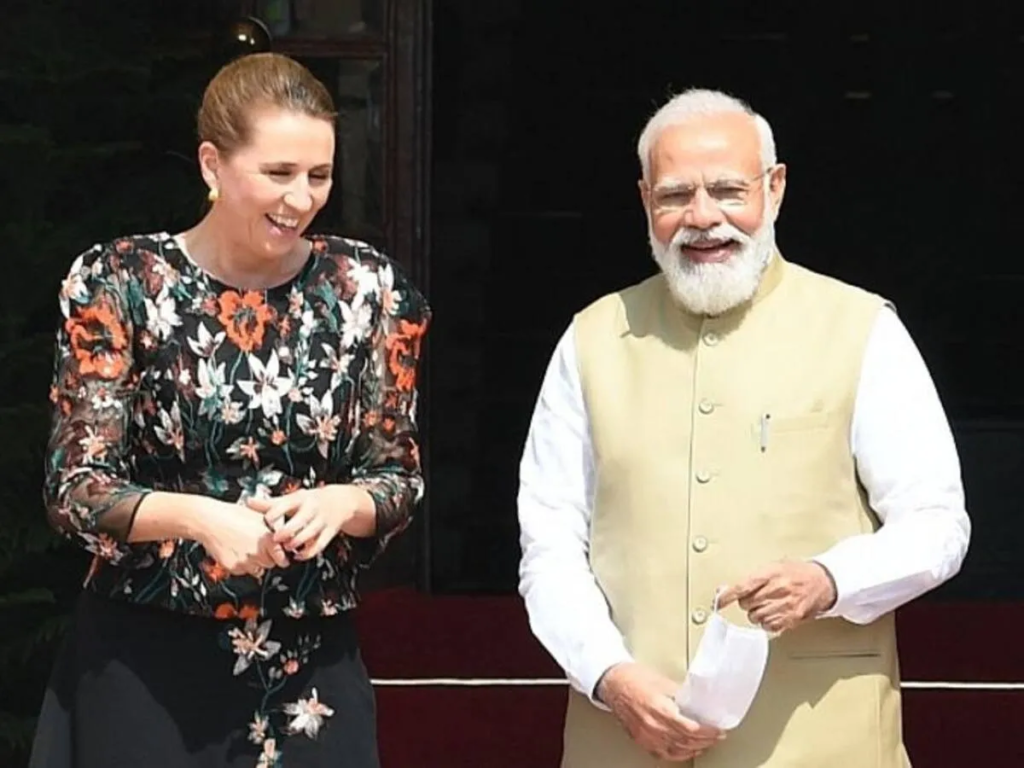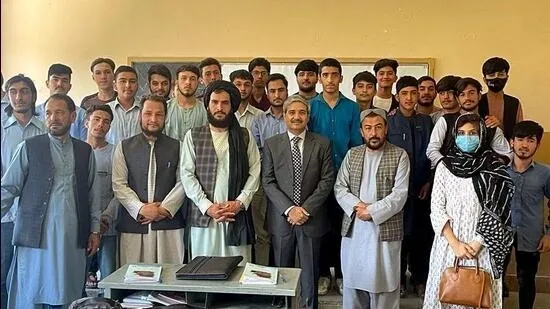The Evolving Dialectic of Obamaism and Trumpism in Contemporary Political Discourse

By Habib Al-Badawi
Introduction
The emergence of Obamaism and Trumpism as competing political philosophies marks a critical juncture in American political development, representing what Sundquist (1983) identifies as a potential “sixth party system” in American politics. These movements embody fundamentally different visions of American identity, democracy, and the nation’s role in the global order, reflecting deeper tensions within modern societies struggling to navigate rapid social, economic, and technological change. As Inglehart and Norris (2019) demonstrate in their analysis of cultural backlash, contemporary political conflicts reflect broader transformations in social values and institutional legitimacy.
The significance of this political moment extends beyond traditional partisan divisions, challenging fundamental assumptions about the nature of political alignment and voter behavior. This study contributes to existing literature by examining how the interaction between cultural identity, economic change, and political realignment has created new forms of political solidarity that transcend conventional class-based politics. Through careful analysis of multiple theoretical frameworks and empirical evidence, we demonstrate how the Obamaism-Trumpism dialectic represents a fundamental reorganization of American political life.
Theoretical Framework
Political Realignment Theory: Beyond Traditional Paradigms
Building upon Burnham’s (1970) foundational work on critical elections, we argue that the current political moment represents a unique form of critical realignment period. Unlike previous realignments, which often centered on clear ideological or policy divisions, the current transformation involves multiple overlapping dimensions of conflict. Burnham’s analysis of how critical elections reshape political coalitions provides crucial insights into understanding current political volatility, particularly when integrated with contemporary theoretical perspectives.
Carmines and Stimson’s (1989) theory of issue evolution offers additional analytical tools for understanding how new political cleavages emerge and restructure party systems. Their research on how racial issues transformed American politics provides a valuable template for understanding how contemporary issues of globalization, immigration, and cultural identity are reshaping political alignments. The authors argue that major political transformations often occur through the emergence of new issue dimensions that cut across existing partisan alignments, a process clearly visible in the current political landscape.
Alexander’s (2006) work on cultural pragmatics provides crucial insights into how political movements construct and perform legitimacy in contemporary media environments. His emphasis on the theatrical aspects of political power helps explain how both Obama and Trump successfully mobilized support through distinct forms of political performance and narrative construction. Alexander’s framework suggests that successful political movements must master both the symbolic and substantive dimensions of political leadership, a challenge that has become increasingly complex in the current media environment.
Cultural Backlash Theory: Understanding Populist Resurgence
Inglehart and Norris’s (2019) cultural backlash thesis offers a sophisticated framework for understanding the rise of Trumpism as a counter-reaction to progressive cultural change. Their analysis suggests that support for populist movements stems not primarily from economic deprivation but from a cultural backlash among demographics that feel threatened by progressive value change. This framework helps explain what they term the “silent revolution in cultural values” and its political consequences, particularly among older, less-educated, and rural voters who feel increasingly marginalized by rapid social change.
The authors’ research demonstrates how cultural anxiety can override traditional economic interests in shaping political behavior. This analysis aligns with Cramer’s (2016) groundbreaking work on rural consciousness, which shows how resentment toward urban elites and perceived cultural condescension has created powerful new forms of political identity. Cramer’s ethnographic research in Wisconsin reveals how place-based identities intersect with economic and cultural grievances to create new patterns of political alignment.
Economic Anxiety Theory: The Precariat and Political Volatility
Standing’s (2011) concept of the precariat provides essential insights into the economic dimensions of contemporary political realignment. His analysis of how economic insecurity creates conditions for political volatility helps explain both the Sanders critique of Democratic Party evolution and the appeal of Trump’s economic nationalism. Standing argues that the emergence of the precariat as a “new dangerous class” represents a fundamental challenge to traditional political alignments and social democratic institutions.
This economic framework is enriched by Hochschild’s (2016) ethnographic research on the American right. Her concept of the “deep story” – a narrative of displacement and betrayal – helps explain how economic anxiety intersects with cultural identity to reshape political allegiances. Hochschild’s work reveals how emotional and cultural factors often override apparent economic self-interest in political decision-making, creating what she terms an “empathy wall” that makes traditional class-based political appeals increasingly ineffective.
Methodology and Research Design
Our research employs a mixed-methods approach combining qualitative and quantitative analysis to examine the complex interactions between cultural, economic, and political factors in contemporary American politics. This methodological framework enables us to capture both the broad patterns of political realignment and the nuanced ways in which individuals and communities navigate changing political landscapes.
Critical Discourse Analysis
Following Alexander’s (2006) emphasis on the performative aspects of political power, we conducted extensive critical discourse analysis of political speeches, policy documents, and public statements from key figures associated with both Obamaism and Trumpism. This analysis focused on identifying recurring themes, rhetorical strategies, and symbolic constructions that shape political meaning and mobilize support.
Comparative Historical Analysis
Building on Sundquist’s (1983) framework for analyzing party system dynamics, we situated current political realignments within broader patterns of American political development. This historical perspective helps illuminate both the unique aspects of the current transformation and its connections to previous periods of political realignment.
Demographic and Electoral Analysis
We analyzed extensive demographic and electoral data to track changes in political alignment across different social groups and geographic regions. This quantitative analysis was integrated with qualitative research on political identity and behavior, following Cramer’s (2016) emphasis on the importance of understanding how people make sense of their political choices in specific social contexts.
The Evolution of Obamaism: Promise and Paradox
Progressive Vision and Institutional Constraints
Obamaism emerged as a distinct political philosophy attempting to reconcile progressive aspirations with institutional constraints. Drawing on Alexander’s (2006) framework of cultural pragmatics, we can understand Obama’s political performance as an attempt to bridge America’s racial divide while maintaining traditional institutional legitimacy. This delicate balance created what some critics saw as a contradiction between symbolic progress and substantive change.
The Obama presidency marked what Carmines and Stimson (1989) would recognize as a critical moment in issue evolution, particularly regarding questions of race, healthcare, and economic inequality. However, the institutional constraints on progressive change, combined with the global financial crisis, created tensions within the Democratic coalition that would later contribute to the rise of both Sanders-style democratic socialism and Trumpian populism.
Transformation of the Democratic Coalition
The Obama years accelerated long-term changes in the Democratic coalition, leading to what Sundquist (1983) would identify as a critical realignment of political allegiances. The party’s increasing reliance on college-educated voters, minorities, and urban professionals, coupled with the erosion of working-class white support, represented a fundamental transformation in American political alignment.
This transformation reflected broader social and economic changes identified by Standing (2011) in his analysis of the precariat. The Democratic Party’s evolution toward what critics called “professional-class liberalism” created openings for both left-wing and right-wing challenges to establishment politics, setting the stage for the rise of Trumpism.
The Rise of Trumpism: A Multi-dimensional Analysis

The emergence of Trumpism represents a fundamental reimagining of American conservative politics, transcending mere reactionary politics to establish a new paradigm of right-wing populism. Trump’s remarkable synthesis of economic nationalism, cultural traditionalism, and anti-establishment rhetoric forged a political coalition that defied conventional Republican orthodoxy. This transformation demands analysis through multiple theoretical lenses to fully grasp its significance and implications for American democracy.
Economic Nationalism and the Politics of Nostalgia
Trump’s economic message resonated profoundly with working-class Americans in post-industrial regions through its artful blend of nostalgia and grievance. His promises of manufacturing revival and challenge to globalization spoke directly to communities that felt abandoned by the bipartisan consensus on free trade and market liberalization. However, this economic nationalism harbored deep contradictions that reveal its primarily symbolic nature.
The vision of industrial revival collided with inexorable technological and structural changes that have fundamentally altered the nature of manufacturing employment. Moreover, Trump’s actual policy agenda often privileged capital interests over labor concerns, even as his rhetoric championed working-class solidarity. His emphasis on trade protectionism notably overlooked the intricate integration of American enterprises within global supply networks, suggesting that Trumpism’s economic appeal operated more as a compelling narrative than a viable policy framework.
Cultural Backlash and the Politics of Identity
Trumpism’s genius lay in its ability to channel cultural grievances against progressive social change into a coherent political movement. Drawing on Hochschild’s penetrating concept of the “deep story,” Trump’s cultural messaging provided a powerful interpretive framework for Americans grappling with rapid social transformation and perceived status loss. His opposition to “political correctness” resonated with voters who felt marginalized by evolving cultural norms, while his stance on immigration and demographic change spoke to anxieties about national identity.
The movement’s rejection of cosmopolitan globalism in favor of nationalist particularism offered a compelling alternative to the progressive vision of multicultural democracy, demonstrating how cultural alignment often supersedes traditional economic interests in contemporary political behavior.
Media Ecology and the Transformation of Political Communication

Trump’s mastery of new media platforms, particularly Twitter, fundamentally altered the landscape of political communication. His approach transcended traditional media gatekeeping through direct engagement with supporters, strategic deployment of controversy, and emotional resonance. This communication strategy both reflected and accelerated the fragmentation of shared political reality, contributing to what scholars have termed an “epistemic crisis” in American democracy.
The creation of alternative narratives that challenged establishment consensus developed into a powerful tool for political mobilization, even as it raised profound questions about truth and democratic discourse in the digital age.
The Sanders Movement and the Renewal of Left Populism
While Trumpism emerged as a right-wing populist response to establishment politics, Bernie Sanders spearheaded a parallel challenge from the left that revealed deep fissures within progressive politics. Sanders’ emphasis on economic inequality and class struggle offered a compelling alternative to both establishment liberalism and right-wing populism.
His movement’s prioritization of economic justice over identity politics, coupled with ambitious social democratic reforms, exposed tensions between traditional economic leftism and contemporary identity-based liberalism. This approach particularly resonated with younger voters, highlighting generational dimensions of political realignment and suggesting new trajectories for progressive politics.
Institutional Politics and Democratic Legitimacy
Both Trumpism and the Sanders movement posed fundamental challenges to established institutional arrangements, though their approaches differed markedly. Trump’s unprecedented claims of electoral fraud and the January 6th events exposed the fragility of democratic norms and institutions, while raising profound questions about maintaining democratic legitimacy in an increasingly polarized society. Meanwhile, the current political moment has strained America’s two-party system in unprecedented ways, revealing deep ideological divisions within both major parties and suggesting possible paths toward systemic reformation.
Global Order and National Sovereignty
The dialectic between Obamaism and Trumpism played out against a backdrop of shifting global power dynamics, with Trump’s “America First” approach marking a decisive break from post-WWII American leadership. His skepticism toward traditional alliances and preference for bilateral engagement challenged fundamental assumptions about American global leadership.
Both movements grappled with tensions between economic globalization and national autonomy, particularly regarding trade policy, immigration, technology transfer, and environmental regulation. These issues highlighted fundamental questions about the relationship between national sovereignty and global integration in an interconnected world.
Future Trajectories and Political Evolution
Analysis of current trends suggests several possible trajectories for American political development. The first scenario envisions continued polarization, characterized by further entrenchment of current divisions and potential weakening of democratic institutions.
An alternative pathway suggests the emergence of a new synthesis, integrating populist concerns with institutional stability and developing novel policy paradigms. A third possibility contemplates systemic transformation, including fundamental institutional reform and evolution beyond the two-party system.
Theoretical Implications and Research Horizons
This analysis opens new avenues for scholarly investigation, particularly regarding the integration of theoretical frameworks that can better explain contemporary political behavior. The synthesis of economic and cultural explanations, combined with analysis of technological influence on political behavior, suggests the need for innovative methodological approaches. Future research priorities should focus on understanding evolving patterns of electoral behavior, institutional adaptation, and policy development in an age of rapid technological and social change.
Concluding Remarks
The dialectic between Obamaism and Trumpism represents a fundamental transformation in American democracy that transcends temporary political alignment. Traditional political categories increasingly fail to capture contemporary political reality, as economic and cultural factors interact in complex ways to shape political behavior.
The future of American democracy depends on developing new political frameworks that can address legitimate economic and cultural concerns while maintaining democratic stability and fostering social cohesion. Success in navigating this transformation will require both theoretical innovation and practical advances in democratic governance, suggesting a crucial role for scholars and practitioners in shaping the future of American politics.
Bibliography
- Alexander, J. C. (2006). Cultural Pragmatics: Social Performance Between Ritual and Strategy. Cambridge University Press.
- Burnham, W. D. (1970). Critical Elections and the Mainsprings of American Politics. W.W. Norton.
- Carmines, E. G., & Stimson, J. A. (1989). Issue Evolution: Race and the Transformation of American Politics. Princeton University Press.
- Cramer, K. J. (2016). The Politics of Resentment: Rural Consciousness in Wisconsin and the Rise of Scott Walker. University of Chicago Press.
- Hochschild, A. R. (2016). Strangers in Their Own Land: Anger and Mourning on the American Right. The New Press.
- Inglehart, R., & Norris, P. (2019). Cultural Backlash: Trump, Brexit, and Authoritarian Populism. Cambridge University Press.
- Standing, G. (2011). The Precariat: The New Dangerous Class. Bloomsbury Academic.
- Sundquist, J. L. (1983). Dynamics of the Party System: Alignment and Realignment of Political Parties in the United States. Brookings Institution Press.



